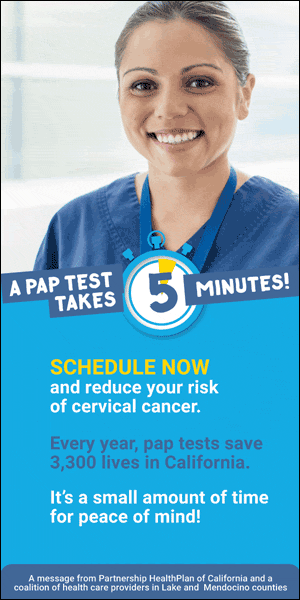

Oh, I’m not creative.
It’s impossible to count how many times I’ve thought or uttered these four words. I’ve thrown them at friends and family who attempted to compliment me, and at employers and colleagues who wanted to enlist my help with new projects.
I spoke them aloud even while I drafted screen plays in film school, produced art exhibitions and reviewed plays, filmed documentaries and wrote news articles. I’ve whispered these to myself as I admired the artistry of family members: painters, film- makers, writers, engineers, medical innovators. The way i wished I had the creative impulse that seemed to come so naturally for them — a creative impulse I simply didn’t recognize in myself.
For most of my life, I’ve seen myself as a producer, a patron, a cheerleader. But a creator? Nope. Not me.
Turns out I’ve been wrong. And if you’ve ever denied your personal creativity, you’ve been mistaken, too.
“It comes with an assumption that creativity is reserved for designers and artists, which could not be further from the truth,” says Elena Imaretska, coauthor of The Innovative Mindset and chief innovation officer at Brave New Workshop, a world-renowned improvisational theater and corporate-training company in Minneapolis.
The biggest obstacle waiting in the way of your creativity is believing you’re not creative, says Imaretska.
“When the label ‘being creative’ is eroding your self-confidence and precluding you from stretching, learning, and creating, reframe it to ‘acting creatively,’” she suggests. “You may don’t think of yourself as creative. That doesn’t mean you can’t act creatively sometimes. And when you make space for creative activities in your lifetime, you will soon realize that you have become creative.”
Why Creativity Matters
To be human will be creative — to solve problems, to arouse pleasure, to create life more convenient, to make relationships more robust. When we deny our creativity, we deny our humanness. (It’s important to note that scientists are researching creativity in other species, which suggests that it’s not even confined to humans. One could argue that to be alive is to be creative.)
Moreover, the qualities associated with creativity — focus, presence, awareness, engagement, curiosity, self-expression, courage, self-trust, nonattachment, and persistence — are important to our overall life satisfaction, says Imaretska.
“Be resourceful means risking failure and staying available to change,” adds acclaimed opera singer Gwen Coleman Detwiler, DMA, associate professor at the University of Cincinnati. “Creativity isn't goal- oriented as much as it is being present in the moment. I think it takes courage to be vulnerable to all that the moment brings.”
As adults, we've been conditioned to guard against pain and failure, a defensiveness that blocks both vulnerability and creativity, says Detwiler. But garnering the courage to become creative requires neither artistry nor perfection. Mastery isn’t the goal of creativity, she argues. Practicing openness is.
“Everything that is new requires creativity,” she explains. “Was Einstein not creative in developing the idea of relativity? Was Gandhi not creative in developing new ways to resolve human conflict? There are people who use creativity to construct systems of organization or write code or even just manage a family schedule. I think we tap into this process by respecting and creating space for your exible and curious child who lives inside everyone. We must give space for failure and not be frightened of vulnerability.”
Today’s conflict-rife times allow it to be more important than ever to harness our creative powers, says Imaretska.
“We've many challenges to solve. The believing that created our problems won't help us solve them, therefore we all need to intentionally focus on our creative muscles. We must be ‘innovatively fit’ so that we can contribute our ideas, our skills, and our passions to solving our society’s challenges.”
To take advantage of the problem-solving power of creativity, Imaretska encourages the “Yes, and . . .” approach utilized in improvisational theater. “Creativity is about building rather than halting. It’s about expansive thinking instead of stagnation,” she explains. “‘Yes’ means ‘I realize the current reality. I heard you.’ ‘And’ means ‘Here is when we can move forward; here is also try this and my point of view.’”
This method honors all parties’ perspectives, removes the need to argue, and points to some pot way forward. It’s a creative approach applicable in all kinds of relationships, be they personal, work related, or global.
After all, adds Detwiler, creativity isn't about being right. “It's about being curious and uninhibited. Creativity is a process, not a result. The process can lead to a wide variety of outcomes, many of which would not be considered art. Creativity is one thing that already exists inside everyone. It needs only to be uncovered.”
A Creative Path Forward
To transition your thinking from I’m not creative to Yes, and . . . , Detwiler suggests wondering: What if I were creative? With what context do I already exhibit openness to experience? Where else am I prepared to be open? Then move in that direction.
In The Innovative Mindset, Imaretska and her coauthor, John Sweeney, recommend the next reframing exercises to challenge our narratives about creativity (or lack thereof), to develop openness, and to fuel creative thought and action:
- When you're working on a project or a task, ask, “How could we complete this when we had no budget?”
- Find and listen to five different versions of the identical song. A country version of a Beatles song is the same song, for example, but it sounds a lot different.
- Make a summary of 10 things that ended up very different — and actually better — than you’d expected.
- Find a product in your garage or other space for storage and think of 10 things it could be used for besides its intended purpose. For instance, tires make great playground swings!
- Write a few alternative endings for a movie or book and consider which you like best.
- Plan a hypothetical vacation with three very different people you know and picture how each getaway differs.
- List all the major technology in your life (car, computer, phone, electricity, refrigeration, etc.) and discover solutions to challenges that would arise if you lost each of them. For instance, “If I didn’t have a car, I'd take the bus or carpool.”
Exercises like these demonstrate that creativity is, indeed, available to all of us. We just have to be willing to explore the unknown. “When you are getting an impulse to try something, don’t edit. Just try it,” says Detwiler. “When you are curious about something, follow that curiosity, and find out where it takes you.”
WEB EXTRA!
Defining Creativity
There are many myths about creativity, which promote the “not me” message:
Creativity resides in certain discrete portion of the brain that just some of us can access. The right-side-vs.-left-side argument – which posits that creative people predominantly make use of the right side of their brains while analytical, logic-driven individuals are left-side dominant (and inherently less creative) – continues to be debunked.
Creative power is reserved for the “creative genius,” a story that links creativity with intelligence. In fact, research shows a weak association between creativity and intelligence, meaning you don't necessarily have to be smart to be creative.
Creative acts are restricted to the young. We applaud the open minds we see in children and bemoan closed doors and lost opportunities as we grow older. But from a neuroscientific perspective, our minds are wired for creativity so long as we keep practicing creative acts, and as long as our brains remain healthy,according to Mark Walton, author of Boundless Potential: Help your Brain, Unleash Your Talents, Reinvent Your Work in Midlife and Beyond.And injury or damage caused by concussion or dementia doesn't necessarily preclude creativity: Firing the mind in creative ways is usually still possible and can strengthen damaged connections.
What all of this research tells us is something that artists have long known: Creativity isn't the bastion of a select few. Rather, it is something we can all make use of and develop as a skill.













